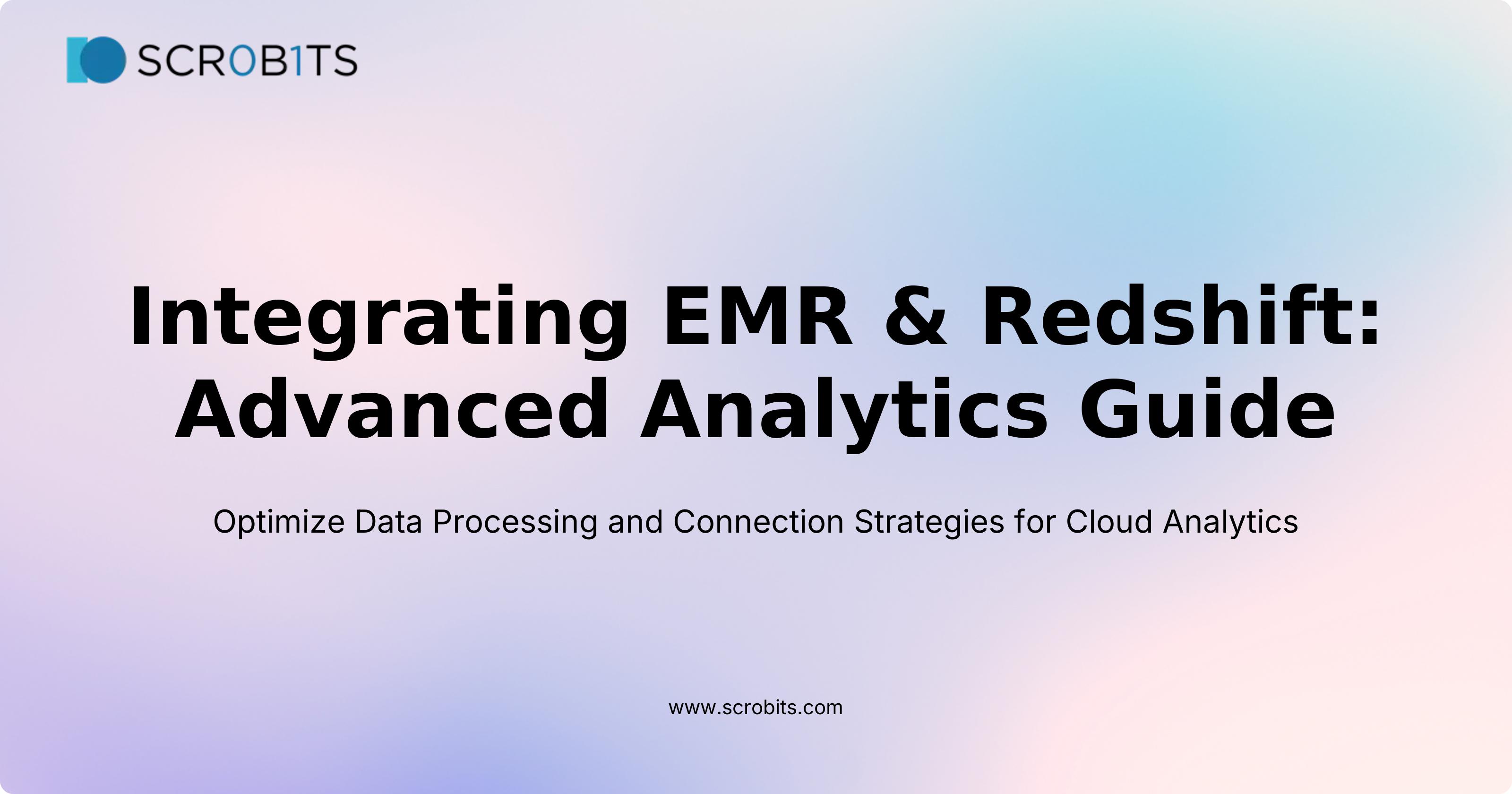Integrating EMR & Redshift: Advanced Analytics Guide
 Arpit Shrivastava
Arpit Shrivastava
Overview of Integrating Amazon EMR and Redshift
Let me dive into how integrating Amazon EMR and Redshift is transforming advanced analytics.
This duo offers a smooth experience, maximizing data insights and boosting efficiency. But why is this integration such a game-changer?
Importance of Integration for Advanced Analytics
Think of this integration as a turbocharger for cloud-based analytics.
When Amazon EMR’s powerful processing meets Redshift’s lightning-fast queries, a robust ecosystem emerges, ready for complex analytical tasks.
This combination drastically cuts down the time needed to generate insights. In today's fast-paced environment, that is invaluable.
Redshift is the star player in analytics, handling massive datasets and complex queries with ease.
Businesses that have shifted to Redshift report up to 10 times better performance than traditional data warehouses.
What’s even more exciting? The ability to scale seamlessly alongside your growing data without losing performance. This is more than just analytics; it's a revolution in leveraging cloud capabilities.

Amazon EMR Redshift Integration Strategies
Hey there, fellow data enthusiast! Have you ever plunged into the vast oceans of big data analytics? If so, you know how crucial it is to have efficient data processing and storage solutions.
So, grab your gear as we explore how Amazon EMR and Redshift, two titans in the AWS ecosystem, come together to make our data dreams a reality.
How to Connect Amazon EMR and Redshift
Connecting Amazon EMR to Redshift is like building a bridge to efficiently process and analyze data.
First, you'll need an Amazon Redshift cluster ready to go. Using the AWS Data Pipeline can make this connection smoother.
You might wonder, "Which tools are necessary for this connection?" Well, JDBC and ODBC drivers are your go-to.
This setup allows seamless data transfer between EMR and Redshift. EMR’s capability to handle unstructured data, powered by Apache Spark, makes this process even more efficient.
Workflow Optimization Techniques
Optimizing workflows between these platforms isn’t just about speed; it's also about style.
One neat trick is to stage your data in Amazon S3 before moving it into Redshift. You might ask, "How do I pull data efficiently from Redshift?" Easy! Use SQL commands to extract the data from Redshift, ensuring your operations stay fast and affordable.
Believe it or not, optimizing your workflow could reduce query times by up to 40%. This makes real-time analytics possible, transforming the way we handle data.
Best Practices for Integration
Imagine best practices like creating a beautiful piece of art.
You need precision and perfect timing. Knowing when to use Redshift over EMR is vital. EMR excels with unstructured data, while Redshift is king with structured and semi-structured data.
To make integration smooth, you need to understand this balance.
Let’s say you're dealing with complex ETL workloads. Start with EMR's capabilities using Apache Spark, then move the refined data to Redshift for analytics. This smart balance isn’t just clever; it’s revolutionary!

In summary, whether you’re a tech-savvy pro or a curious learner, the synergy between Amazon EMR and Redshift offers powerful tools and strategies for advanced data analytics. It’s a journey worth taking in today’s digital world.
Subscribe to my newsletter
Read articles from Arpit Shrivastava directly inside your inbox. Subscribe to the newsletter, and don't miss out.
Written by

Arpit Shrivastava
Arpit Shrivastava
I'm Arpit, Co-Founder of ScroBits. I love talking about IoT, SaaS and Cloud DevOps. We make IT outsourcing fun and effective with our MERN stack expertise. When not in the tech world, I enjoy plogging, mountaineering, and working out. Ready to transform your business? Let's chat and make tech magic happen.